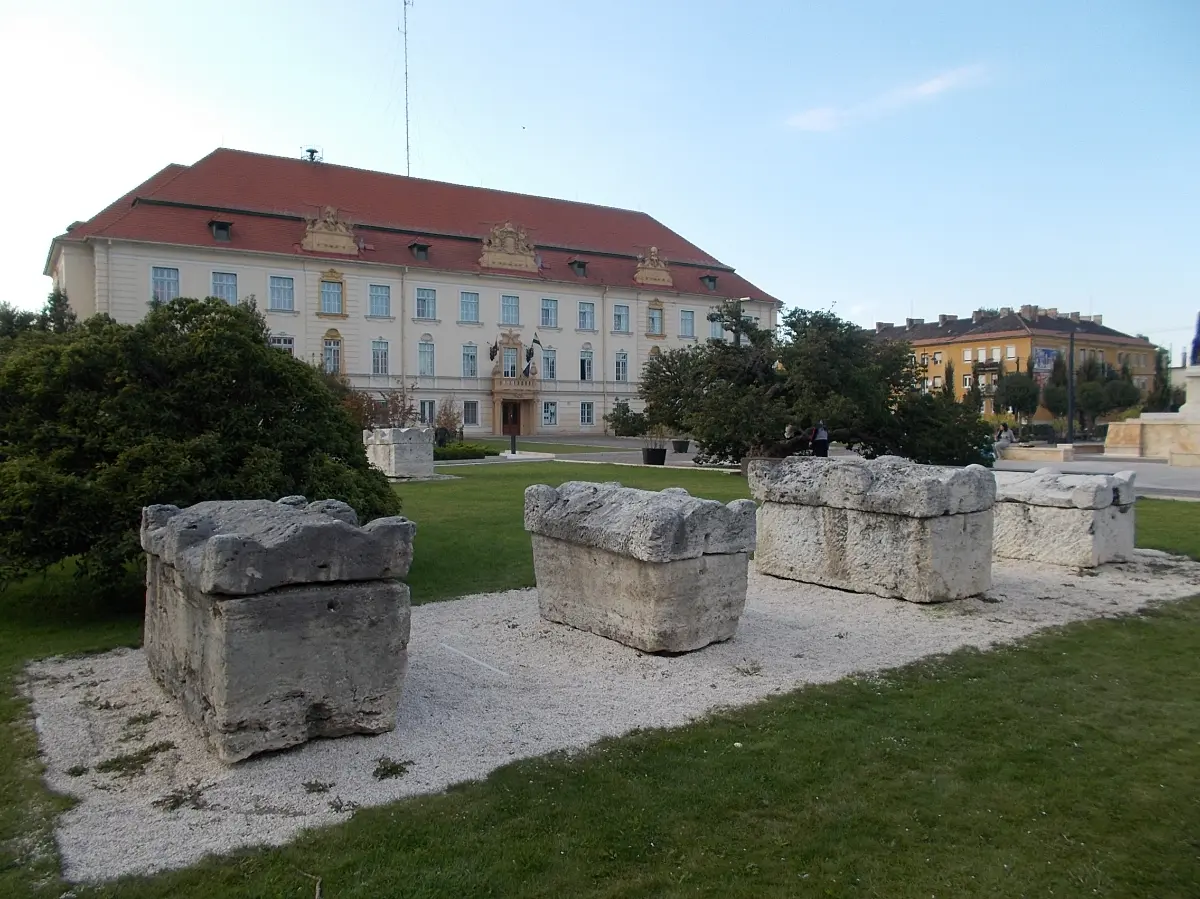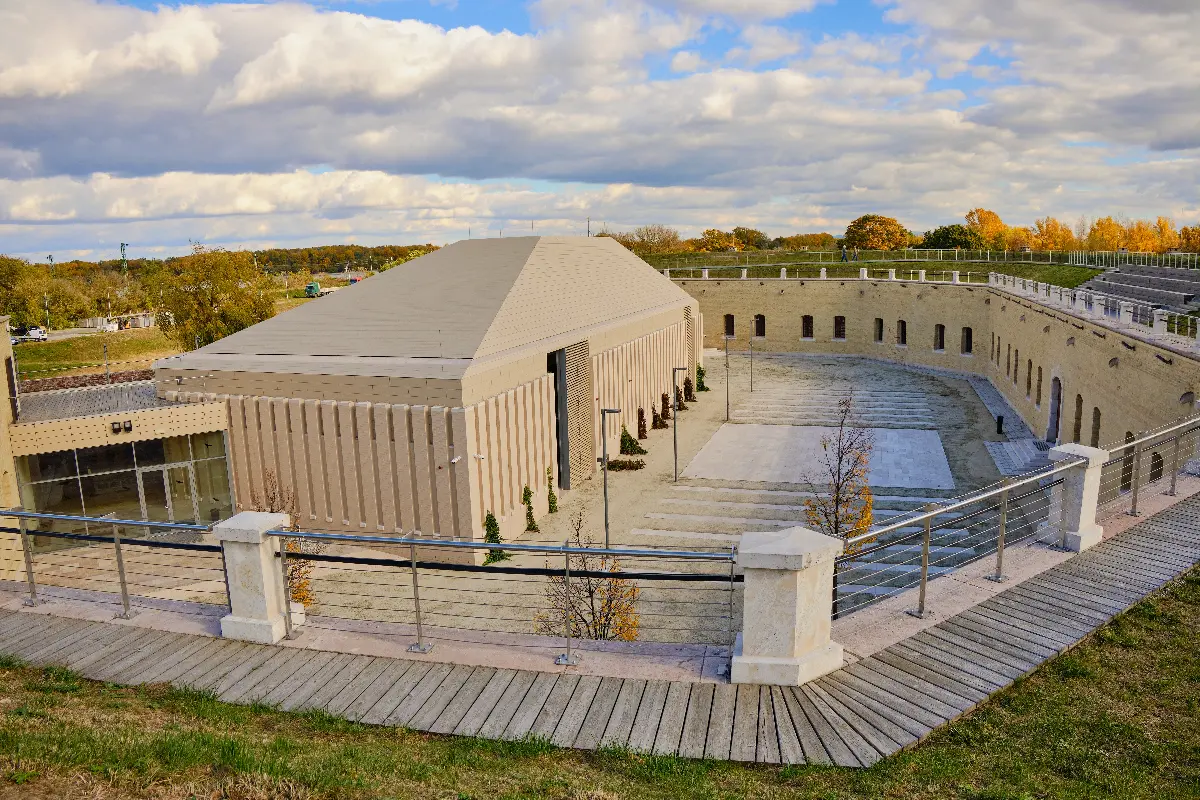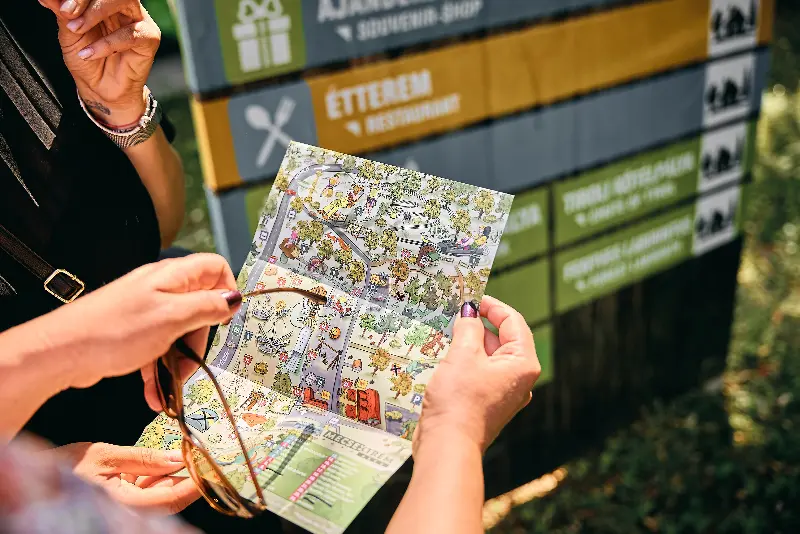
Helyszín címkék:
The Hungarian and Slovak side of the city of Komárom – The city of fortresses, within and beyond the border
Hype&Hyper
The history of the two cities has been intertwined from the very beginning, with the northern or southern parts of the city being more vibrant, depending on the era. Celtic tribes were the first settlers in the area, who built their houses in the area of today’s Szőny in the 3rd century B.C., on which Brigetio, one of the most strategically important settlements of the Roman province of Pannonia, was built in the 1st century A.D.
Pia Fidelis – loyal and persistent
The construction of the military settlement was begun upon the order by the Emperor Trajan against the Quadi (a small Germanic tribe) attacking from the north, and gradually grew into a civilian quarter for the families of the soldiers and their support staff. As well as protecting the border, the Legio I Adiutrix was deployed in countless Roman wars, earning them the title Pia Fidelis from Emperor Trajan, and even the famous Marcus Aurelius made a visit here. Remains of an amphitheatre, floor-heated houses, shrines, statues, everyday objects and a well-preserved bath complex of almost 800 square metres have been unearthed. The artefacts are on display in the Brigetio Heritage Visitor Centre in Komárom, which was opened in April 2023, and there is also a Brigetio collection in the Domonkos Kuny Museum in Tata.

Reliable protection
Although the legion was disbanded after the fall of the empire, Komárom’s defensive function was preserved thanks to its good location. After the conquest, the area fell into the hands of the chieftain Ketel. The first castle was built upon the order of his son Alaptolma on the right bank of the Danube (in present-day Slovakia), so from then on, the town north of the Danube was known as Komárom (today in Slovakian: Komárno), while to the south, it was shared by two tiny settlements, Rév-Komárom (named after the harbour works) and Szőny. Komárom was the outpost of Vienna in Turkish times. Although the nearby Tata and Győr were conquered by the Sultan’s army, Komárom cut the Janissaries’ knife during the siege of 1594 and got never conquered. In the following centuries, the number of military buildings increased steadily, but finally, in 1809, Emperor Francis I, after finding refuge here after the fall of Vienna in the Napoleonic war, ordered the construction of the largest military fortress system of the empire in Komárom. By this time, the first fortress in the southern part of the Rév-Komárom area, the St. Peter’s planks, built in 1586, was already completed, along with the northern Öregvár (Old Castle) and Újvár (New Castle). The Star Fortress stands in the place of the latter, next to which two other fortresses (Monostori Fortress, Igmándi Fortress) were planned to be built.

Famous Komárom is conquered
However, work was interrupted by the 1848-49 war of independence. But it was also the most glorious period of the defence system, because on the day of the Battle of Pákozd, 29 September, 1848, under the leadership of György Klapka, it fell into Hungarian hands. The new commander of the castle gave the order to build the previously planned Monostor fortress, only part of which was completed during the war of independence. Klapka and his soldiers did well, and despite the heavy siege, they surrendered the city to the Austrians only months after the Világos capitulation. However, the Monostori Fortress continued to be built and was completed by 1871, and the completion of the Igmándi Fortress in 1877 completed the Komárom fortress system.

Culture instead of war
Today, the Monostori Fortress hosts war games, festivals and other events (such as weddings – a testament to the fact that the once intimidating site has become a photogenic one), as well as an interactive exhibition where you can walk around the dungeons and learn about the site’s military past. There is a Roman stone store in Igmándi Fortress, and the oldest structure, the Star Fortress, founded almost half a thousand years ago, has undergone major renovations in recent years. Forgetting the sad memories of the Second World War (this is where the deported people were gathered), culture is rewriting the history of the place: after the renovation, a 7000 square metre complex has been created. The cannon and gun emplacements have been restored to their historic state and an outdoor stage area has been created in the courtyard. The exhibition space is home to the Museum of Fine Arts’ vast collection of sculpture replicas.






